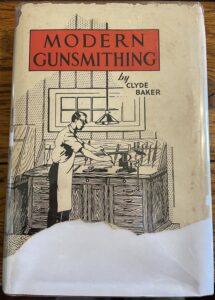Apologies for the slowdown in posting. I’ve been working on my paper for the 2022 MLA convention on “Sexual Politics in ‘Hobgoblins‘”.
(Lawrence pointed out an interesting fact: “Road Rash” in “Hobgoblins” is the same actor who played “Maynard” in “Pulp Fiction”.)
Anyway, a couple of interesting gun politics stories by way of the NYT:
San Francisco’s district attorney on Wednesday sued three online retailers for selling “ghost guns,” untraceable firearms that can be made from do-it-yourself kits, part of an intensifying nationwide effort to stem the flood of deadly homemade weapons into American cities.
In a civil complaint filed in California Superior Court, District Attorney Chesa Boudin accused the companies — G.S. Performance, BlackHawk Manufacturing Group and MDX Corporation — of marketing a range of products in the state that furnish buyers with parts and accessories that can be quickly assembled into a functional firearm.
Note the phrasing: “…parts and accessories that can be quickly assembled into a functional firearm”, not firearms themselves. I am not familiar with California law, so I don’t know what the status of 80% parts kits is there, nor do I know if any regulations against same would pass constitutional muster.
But it feels like this is one of those things that doesn’t matter, much like Remington and Sandy Hook: they might be able to beat the case legally, but the criminal DA of San Francisco can make it expensive enough to cripple or even bankrupt the vendors.

Great and good FotB (and official firearms trainer of WCD) Karl put up a long – and, I think, fascinating – review on his blog of a vintage (1981) firearms/self defense guide from South Africa. I don’t recommend you follow the advice (and Karl does an excellent job of pointing out where it deviates from evolved practice today) but it is an interesting slice of history from a place only a few of us are familiar with.
Noted: the Smith and Wesson M&P 12. I’m kind of happy to see S&W back in the shotgun market, but I’m not wild about this particular gun.
